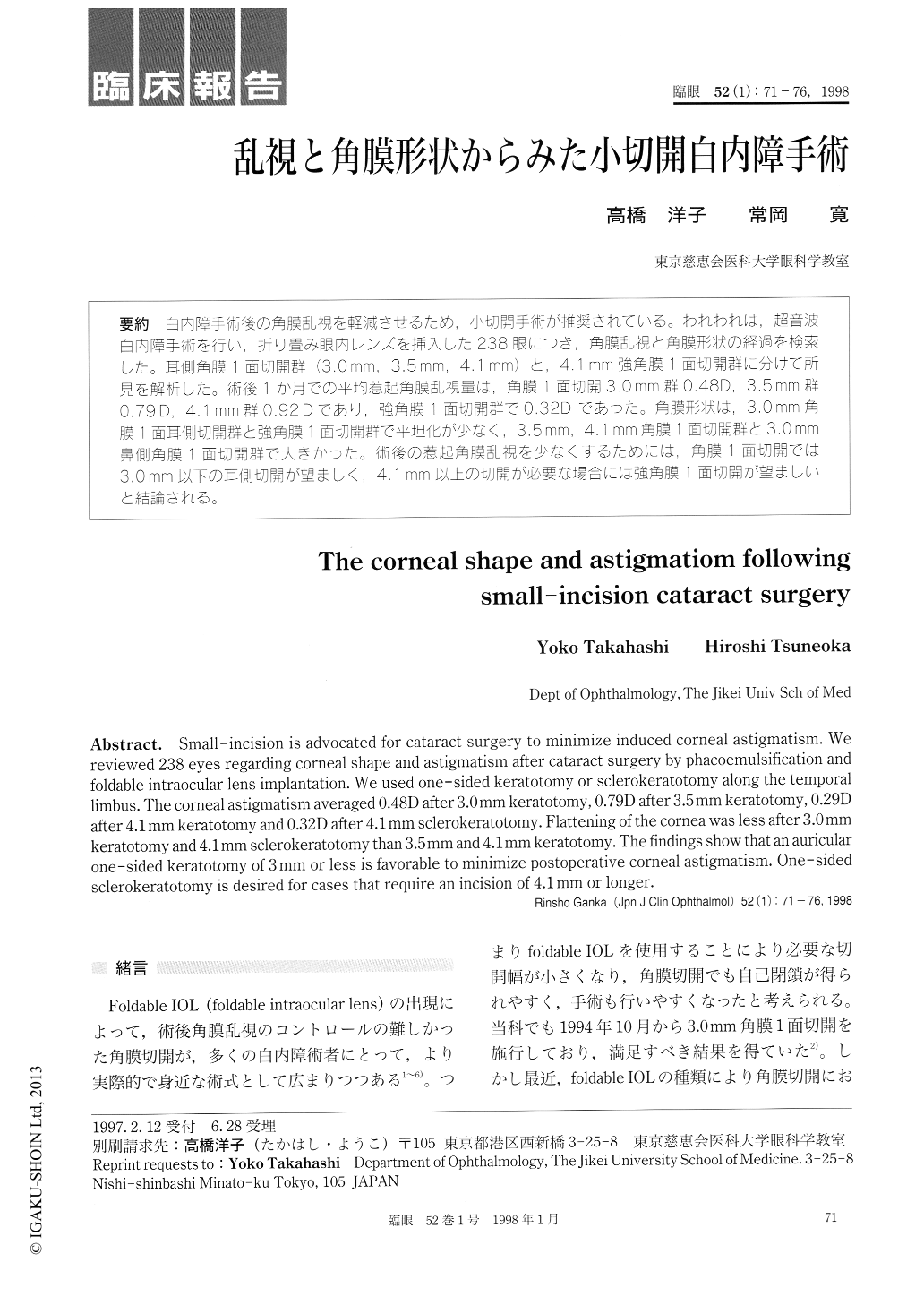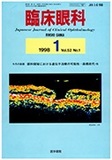Japanese
English
- 有料閲覧
- Abstract 文献概要
- 1ページ目 Look Inside
白内障手術後の角膜乱視を軽減させるため,小切開手術が推奨されている。われわれは,超音波白内障手術を行い,折り畳み眼内レンズを挿入した238眼につき,角膜乱視と角膜形状の経過を検索した。耳側角膜1面切開群(3.0mm,3.5mm,4.1mm)と,4.1mm強角膜1面切開群に分けて所見を解析した。術後1か月での平均惹起角膜乱視量は,角膜1面切開3.0mm群0.48D,3.5mm群0.79D,4.1mm群0.92Dであり,強角膜1面切開群で0.32Dであった。角膜形状は,3.0mm角膜1面耳側切開群と強角膜1面切開群で平坦化が少なく,3.5mm,4.1mm角膜1面切開群と3.0mm鼻側角膜1面切開群で大きかった。術後の惹起角膜乱視を少なくするためには,角膜1面切開では3.0mm以下の耳側切開が望ましく,4.1mm以上の切開が必要な場合には強角膜1面切開が望ましいと結論される。
Small-incision is advocated for cataract surgery to minimize induced corneal astigmatism. We reviewed 238 eyes regarding corneal shape and astigmatism after cataract surgery by phacoemulsification and foldable intraocular lens implantation. We used one-sided keratotomy or sclerokeratotomy along the temporal limbus. The corneal astigmatism averaged 0.48D after 3.0 mm keratotomy, 0.79D after 3.5mm keratotomy, 0.29D after 4.1 mm keratotomy and 0.32D after 4.1 mm sclerokeratotomy. Flattening of the cornea was less after 3.0mm keratotomy and 4.1mm sclerokeratotomy than 3.5mm and 4.1mm keratotomy. The findings show that an auricular one-sided keratotomy of 3 mm or less is favorable to minimize postoperative corneal astigmatism. One-sided sclerokeratotomy is desired for cases that require an incision of 4.1 mm or longer.

Copyright © 1998, Igaku-Shoin Ltd. All rights reserved.


